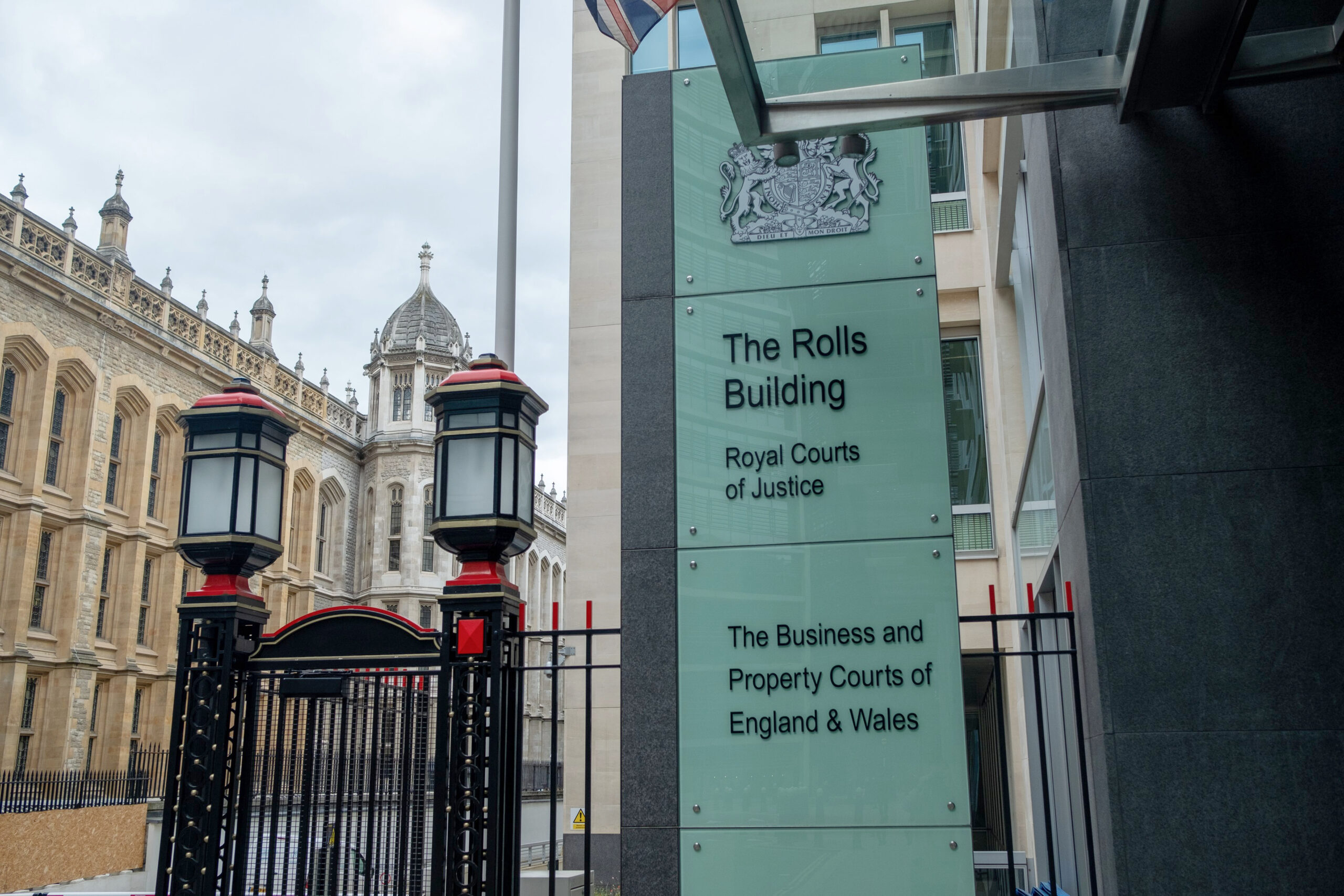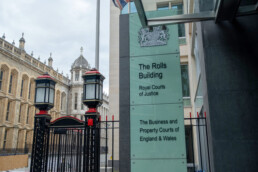
Court hands down judgment in much anticipated Covid-19 BI cases: the takeaways for policyholders
Fenchurch Law represents Stonegate Pub Company Limited in its claim for Covid-19 business interruption losses against its three insurers: Ms Amlin; Liberty Mutual; and Zurich.
760 of Stonegate’s premises were insured under a Marsh Resilience wording, which was a wording considered by the Divisional Court and Supreme Court as part of the FCA Test Case. The Test Case confirmed that the policy responded to business interruption losses. However, a number of secondary issues remained in dispute despite the Courts having confirmed coverage.
The key issues for consideration were as follows:
- Trigger;
- Aggregation;
- Causation;
- Additional Increased Costs of Working (“AICW”); and
- Government Support.
In its judgment, notably, the Court rejected the Insurers’ primary argument that all cases aggregate to the emergence of the virus or pandemic, and agreed with Stonegate’s position that losses are recoverable after the end of the policy period. The Court found in favour of Insurers on other issues, and in particular with regard to furlough.
Below we consider the Court’s judgment in relation to each of the issues, as well as the related judgments in the cases of Greggs v Zurich [2022] EWHC 2545 (Comm) and Various Eateries v Allianz [2022] EWHC 2549 (Comm), and what they mean for policyholders.
Trigger
The Court was asked to consider the trigger (a colloquial shorthand for the matter or matters which gave rise to a right to claim under a policy) under the Disease, Enforced Closure and Prevention of Access perils present in the Marsh Resilience wording. The Court made the following findings:
- The Disease peril is triggered whenever there were cases of Covid-19 which were either discovered at an insured location, or within the relevant vicinity, and each example is separate Covered Event;
- The Enforced Closure peril triggered whenever all or part of an insured location was closed under a relevant compulsion or instruction. The policy is “triggered” in respect of each such closure, and the number of locations closed is the number of triggers. A location opening and then closing again at a different time would be considered a separate trigger;
- The review, reiteration, continuation or renewal of regulations which were materially of the same effect does not constitute a separate closure or separate ‘trigger’;
- The Prevention of Access peril trigger was the number of such actions or advices which prevented or hindered the use of or access to the insured location;
- Steps or advice which merely repeated or renewed an existing prevention or hindrance of access forms part of one set of ‘actions or advice’, and therefore is only one ‘trigger’ or Covered Event;
Policyholders with different aggregation wording, or with no aggregation wording, could find the Court’s analysis on trigger particularly useful.
Aggregation
With regard to aggregation, ever the tricky area for policyholders and insurers alike, the Court considered the extent to which Stonegate’s claimed losses arose from, were attributable to, or were in connection with one more single occurrence for the purposes of aggregation as one or more Single Business Interruption Loss.
In determining the number and nature of occurrences, the Court had regard to ‘the degree of unity in relation to cause, locality, time, and, if initiated by human action, the circumstances and purposes of the persons responsible’. The Court also considered the concept of remoteness between the aggregating event and the loss, which acts as a counterbalance to the more aggressive aggregation clauses and issues that arise from causation.
Insurers maintained a number of alternative cases in relation to aggregation in an attempt to limit Stonegate’s losses to a single sub limit of liability to which all losses could be aggregated.
The Judge disagreed with a number of the Insurers’ proposed occurrences for the purposes of the aggregating wording, including tracing Covid-19 back to its evolutionary roots, the original zoonotic transmission of Covid-19 in Wuhan, and the virus’ entry into the UK. The Court rejected these arguments on the basis that these proposals were either geographically, temporally or causally too remote (or a combination of).
Instead, the Court held that there had been at least two occurrences that satisfied the relevant aggregating test and fell within Stonegate’s policy period (which ended on 30 April 2020), and acknowledged a possible third occurrence, being:
i) The decision taken at the COBR 16 March meeting to advise people to stop non-essential contact with other and to not visit crowed areas such as pubs, restaurant and clubs (a finding that went against the previously established precedent that a decision did not constitute an occurrence);
ii) The instruction given on 20 March that all pubs, bars and restaurants were to close; and
iii) The announcement of the national lockdown on 23 March 2020.
The Court considered that at this point in time the decisions taken by the devolved administrations were taken jointly, and therefore there was only one occurrence across the UK. However, the Court accepted that if it was wrong on this point, there would be an occurrence in the form of the decisions of each home nation.
It is notable, however, that there was no finding in relation to losses in the pre-aggregated period (16 March 2020), therefore, the occurrences thereafter did not aggregate any of the losses incurred before the COBR meeting on 16 March 2020.
The judgment does not consider other occurrences from 30 April 2020, as this is the date on which Stonegate’s policy expired. However, in Greggs v Zurich, the Court provided some further clarity for policyholders, and held that there was a separate occurrence for each announcement or measure relevant to Greggs’ business, with the exception of those that simply continued, made trivial changes to, or reduced existing restrictions.
In Greggs, the Court considered decisions taken from May 2020 by the home nations as being separate and therefore not single occurrences in the meaning the policy wording. The result is that business with locations in each administration will benefit from cover for a separate occurrence (and therefore a separate sub limit if applicable).
Policyholders with longer policy periods should be aware of other examples of an “occurrence” within the meaning of the Marsh Resilience aggregating wording, which may include:
i) In England, the bringing into force of the three-tiered system on 14 October 2020;
ii) The announcement and implementation of the second national lockdown,
iii) The announcement and implementation from 20 December 2020 of the Tier regulations;
iv) Restrictions imposed on limited areas of the country, for example, the local lockdown in Leicester on 04 July 2020.
Causation
Stonegate, as with most hospitality and leisure businesses, continued to feel the effects of Covid-19 long after the expiration of its policy period. The Court found that losses suffered after the expiry of the policy period were attributable to Covered Events, and rejected the Insurers’ argument that any losses suffered after the expiry of the policy period could not have been caused by a Covered Event.
Stonegate’s losses, from 1 May 2020 until 4 July 2020 (in England), 6 July 2020 (in Scotland) and 13 July 2020 (in Wales) were all proximately caused by Covered Events that occurred between 17 February and 30 April 2020.
Losses beyond those dates were considered to be in response to the subsequent developments of Covid-19, and predominantly caused by more recent cases.
The Court did accept that there were several individual categories of causal linkage that could continue after the dates outlined above, such as continued losses caused by deaths or long covid, and loss of momentum in relaunching premises prior to the expiry of the policy period.
Within those categories was the cancellation of events which had been organised to occur after the dates outlined above, by reason of uncertainty as to whether they would be able to go ahead. This category is undoubtably important to the hospitality industry, and the same logic may equally apply across other industries.
The Court gave further consideration to the issues of causation in Various Eateries v Allianz. The Court held that in Various Eateries’ circumstances (where this particular policy expired on 28 September 2020), cases of Covid-19 occurring in the Vicinity during the Period of Insurance were potential proximate causes of government action for a time after 28 September 2020 and in particular, that they were at least equal proximate causes of the tier system announced by the government on 14 October 2020 (but not the movement of some areas within the tier system to tier 2 on 29 October 2020).
The causation findings are very fact sensitive and will be dependent on the length of the policy, the length of the indemnity period and the significance to that policyholder’s business of the different announcements, measures and regulations.
AICW
The Court confirmed that AICW applied per Single Business Interruption Loss (i.e. per occurrence) and in addition to the notifiable disease sub-limit, but it did not apply to economic increased costs of working. The wording of the policy, correctly construed, meant that the AICW limit only applied to additional costs which were uneconomic (i.e. that which exceeds the amount of reduction in turnover avoided) but not to increased cost of working where the limit applicable to the ICW has been exhausted.
Government Support
The Court considered that payments received under the Coronavirus Job Retention Scheme (“CJRS”) should be taken into account for Insurers’ benefit when calculating sums recoverable by policyholders. The significance of this finding is subject to the wording of policy specific savings provisions. However, it is likely to be applicable to most policyholders (not just the Stonegate, Various Eateries and Greggs parties).
Payments made under the Business Rates Relied (“BRR”) would not be accounted for to insurer’s benefit if the business shows that normally business rates would have been paid out of turnover. Unlike the Court’s finding in relation to CJRS, the BRR is fact specific per policyholder.
Where next
A spokesperson for the Stonegate Group said:
“The outcome of this case is far from conclusive. We are pleased that the Judge found in our favour on a number of key issues and note that he sided with our insurers on others. In this sense, the outcome is similar to the judgment of the Divisional Court in the Test Case brought by the FCA last year.
However, we believe that the Court’s interpretation on a number of issues which are generally applicable to policyholders is out of step with the approach taken by the Supreme Court in the Test Case and with the approach of Courts in other jurisdictions (such as on furlough). We intend to appeal those elements of the decision.
Whilst our recovery from the pandemic has been strong, we cannot ignore the significant disruption caused during the last two years and, along with most businesses in the UK, we are now grappling with inflationary challenges and a cost of living crisis for the UK consumer. In the circumstances, we, and other businesses, are entitled to look to our insurers to provide the cover promised under our policy”
Copies of the judgments can be accessed here:
Stonegate – https://www.bailii.org/ew/cases/EWHC/Comm/2022/2548.html
Various Eateries – https://www.bailii.org/ew/cases/EWHC/Comm/2022/2549.html
Greggs – https://www.bailii.org/ew/cases/EWHC/Comm/2022/2545.html
Authors:
Anthony McGeough is an Associate at Fenchurch Law
Joanna Grant is a Partner at Fenchurch Law



